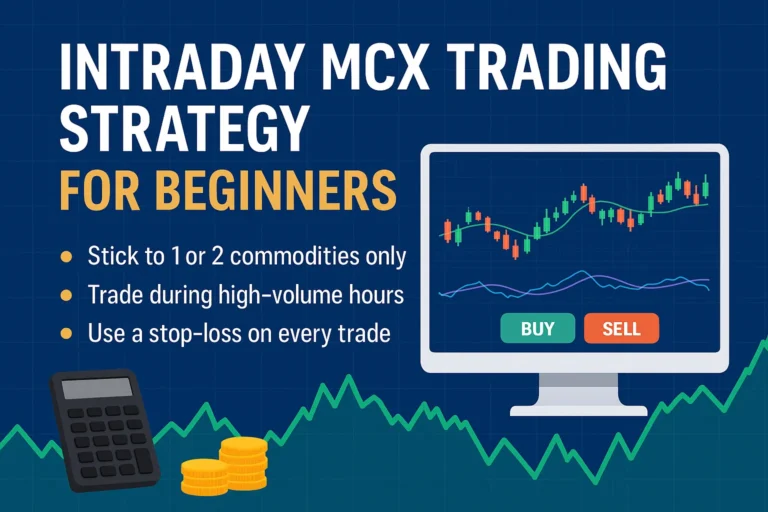Hedging Strategies with MCX Futures
Commodity prices are often volatile and influenced by a range of global and domestic factors. Whether you’re a manufacturer, importer, exporter, or trader, these fluctuations can impact your business or investments. This is where hedging with MCX futures becomes an effective risk management strategy.
In this post, we’ll break down what hedging means in MCX trading and explore practical hedging strategies for popular commodities like gold, crude oil, and metals.
What is Hedging in MCX Trading?
Hedging is a strategy used to reduce the risk of adverse price movements in commodities. It involves taking an offsetting position in a futures contract to protect against losses in the underlying physical commodity or investment.
Example:
If you expect the price of gold to fall but already own physical gold, you can short (sell) a gold futures contract on MCX to offset the potential price drop.
Who Uses Hedging?
- Jewellers hedging gold price drops
- Oil companies hedging crude price fluctuations
- Farmers/exporters/importers dealing in cotton or metals
- Investors looking to reduce portfolio exposure to commodity risk
Benefits of Hedging with MCX Futures
- Reduces uncertainty in profit margins
- Protects against unexpected price drops or spikes
- Enhances planning and budgeting
- Doesn’t require physical holding of the commodity
Common Hedging Strategies Using MCX Futures
1. Short Hedge (Selling Futures)
Used when you hold the physical commodity and want to protect against a potential fall in price.
Example:
A jeweller with gold stock sells gold futures on MCX. If prices fall, the loss in physical gold is offset by gains in the futures position.
Used by:
- Sellers
- Producers
- Exporters
2. Long Hedge (Buying Futures)
Used when you need to purchase the commodity in the future and want to protect against a rise in price.
Example:
A jewellery manufacturer expecting to buy silver in 2 months buys a silver futures contract. If prices rise, the gain in the futures offsets the higher spot price.
Used by:
- Buyers
- Importers
- Manufacturers
3. Cross Hedging
Hedging risk in one commodity by using a correlated commodity’s futures contract.
Example:
If mentha oil futures aren’t liquid, a trader may hedge using another correlated oil commodity if price movement trends are similar.
Note: This is an advanced strategy and should be used only with a good understanding of correlations.
4. Calendar Spread Hedging
Involves buying and selling futures contracts of the same commodity but with different expiry months to manage risk over a time horizon.
Example:
Buy Crude Oil March contract and sell April contract to protect against short-term volatility.
Things to Keep in Mind When Hedging on MCX
- Hedging is a risk management strategy, not a profit-maximizing tool
- Monitor your hedge regularly; market conditions change
- Futures have expiry dates—adjust positions accordingly
- Costs such as brokerage, margins, and slippage should be considered
- Not all commodities have high liquidity—stick to active contracts like Gold, Silver, Crude Oil, Copper
FAQs
Is hedging allowed in MCX trading for individuals?
Yes, both retail and institutional participants can hedge using MCX futures if they follow SEBI and exchange guidelines.
Which commodities are best for hedging?
Gold, silver, crude oil, and base metals like copper and zinc are the most commonly used for hedging due to their high liquidity.
Can I hedge my stock portfolio with MCX?
While MCX is mainly for commodities, you can hedge sectoral exposure if your portfolio is heavily dependent on commodity-linked stocks.
Is hedging risky?
Hedging is used to reduce risk, but if not done properly, it can lead to losses or missed opportunities. It requires planning and discipline.
Do I need special permission to hedge on MCX?
No special permission is needed. You just need a commodity trading account with a SEBI-registered broker that supports MCX.



